Molecular Characterization of Imported and Autochthonous Dengue in Northeastern Spain
- PMID: 34696340
- PMCID: PMC8539074
- DOI: 10.3390/v13101910
Molecular Characterization of Imported and Autochthonous Dengue in Northeastern Spain
Abstract
Dengue is the most significant arbovirus worldwide and a public health threat to non-endemic areas in which Aedes vectors are present. Autochthonous dengue transmission has been reported in several European countries in the last decade. Infected travelers from endemic regions arriving to areas colonized by Aedes albopictus in Europe need to be monitored in surveillance and control programs. We aimed to perform molecular characterization of RT-PCR-positive dengue cases detected in Catalonia, northeastern Spain, from 2013 to 2018. The basic demographic information and the geographical regions of importation were also analyzed. One-hundred four dengue cases were studied (103 imported infections and the first autochthonous case in our region). The dengue virus strains detected were serotyped and genotyped using molecular methods, and phylogenetic analyses were conducted. All four dengue serotypes were detected in travelers, including up to 10 different genotypes, reflecting the global circulation of dengue in endemic areas. The primary travel-related case of the 2018 autochthonous transmission was not identified, but the molecular analysis revealed dengue serotype 1, genotype I of Asian origin. Our results highlight the diversity of imported dengue virus strains and the role of molecular epidemiology in supporting arbovirus surveillance programs.
Keywords: autochthonous transmission; dengue; molecular epidemiology; surveillance.
Conflict of interest statement
The authors declare no conflict of interest. The funders had no role in the design of the study; in the collection, analyses, or interpretation of data; in the writing of the manuscript, or in the decision to publish the results.
Figures

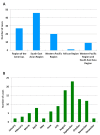
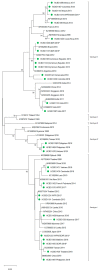
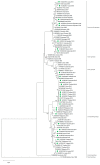
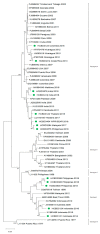
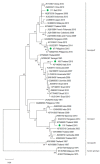

References
-
- Kramer I.M., Pfeiffer M., Steffens O., Schneider F., Gerger V., Phuyal P., Braun M., Magdeburg A., Ahrens B., Groneberg D.A., et al. The ecophysiological plasticity of Aedes aegypti and Aedes albopictus concerning overwintering in cooler ecoregions is driven by local climate and acclimation capacity. Sci. Total. Environ. 2021;778:146128. doi: 10.1016/j.scitotenv.2021.146128. - DOI - PubMed
-
- European Centre for Disease Prevention and Control (ECDC) Autochthonous Transmission of Dengue Virus in EU/EEA, 2010-Present. [(accessed on 19 June 2021)]. Available online: https://www.ecdc.europa.eu/en/all-topics-z/dengue/surveillance-and-disea...
Publication types
MeSH terms
LinkOut - more resources
Full Text Sources
Medical
Molecular Biology Databases

